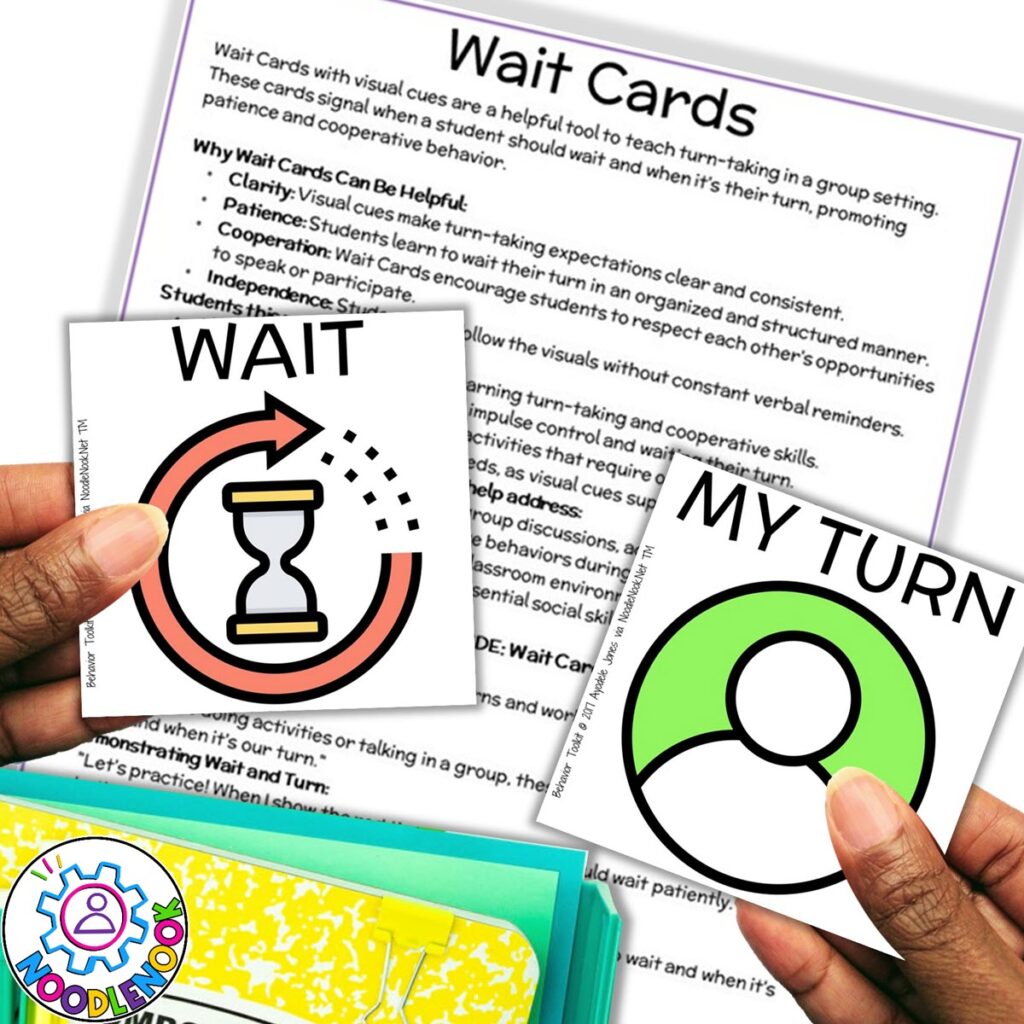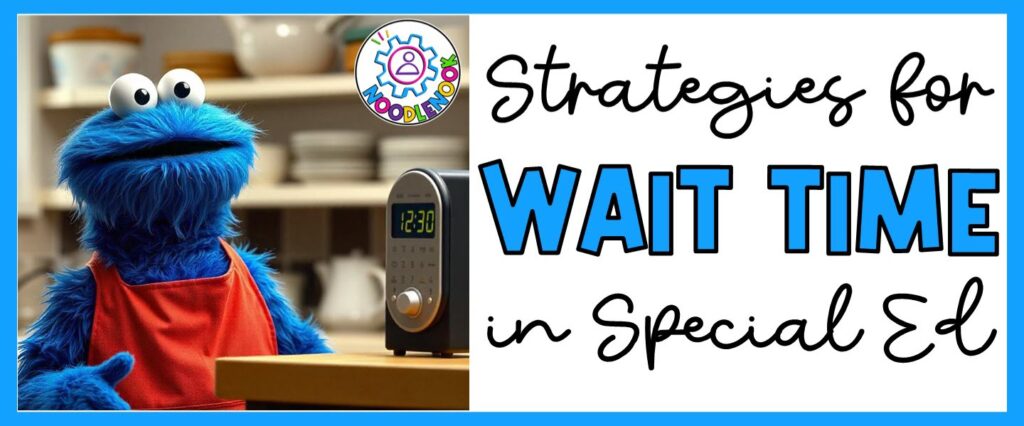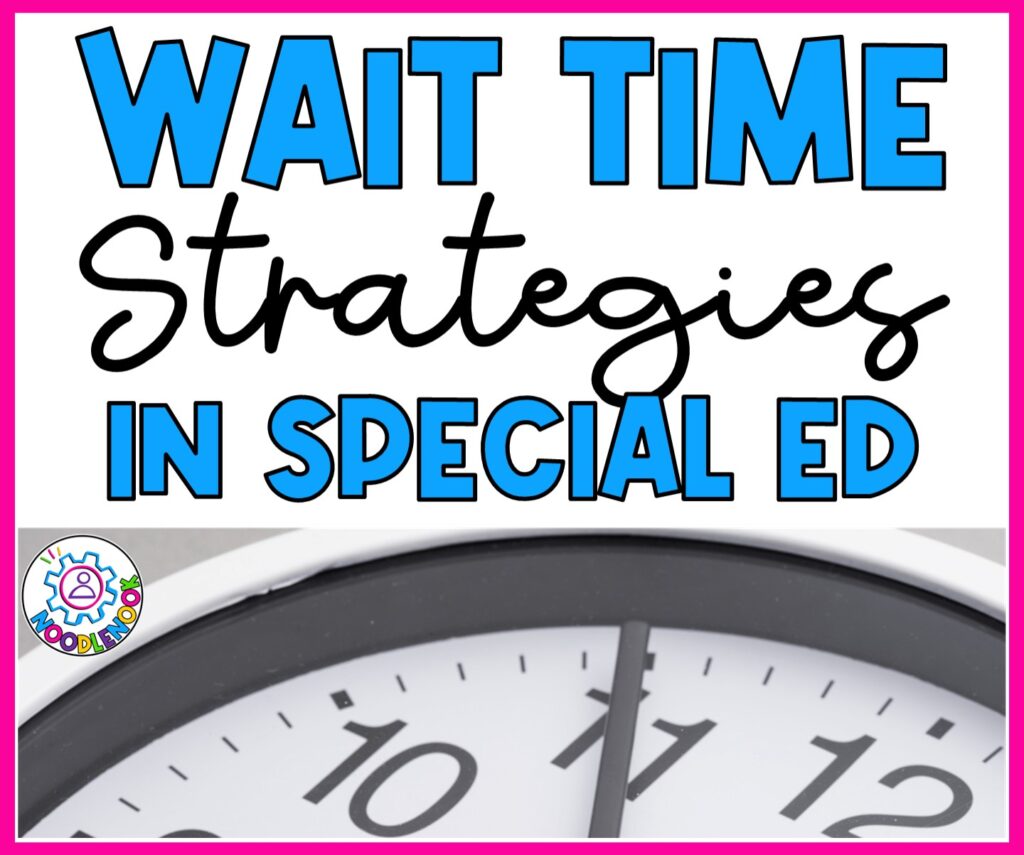I was recently doing a little mindless streaming and the show I was watching said something profound. They said, ‘Just don’t talk and they will tell you everything’. Now, granted, this was all about a shakedown by federal officers in an action series, but I think it works in the classroom too! When you ask questions to students, you have to wait. And wait. And then wait some more. Nowhere is this more evident than when working with students who have more complex access needs. For these students, the process of encoding what you said, formulating a response, and then getting out an answer takes more time. Let’s break down wait time in special education so you can (finally) get the answers you want!
What is Wait Time?
Have you ever felt like you’re talking to a brick wall when you’re trying to get answers from your students with special needs? It’s common with students who need a long wait for processing and answering questions. You ask a question and want a quick response, but the waiting period to get that answer can seem like forever, especially if you are working in large or small groups. The frustration leads to teacher attitudes… the feeling that your students aren’t paying attention or don’t know basic information about your lesson. That may not be the problem. You probably need a simple yet powerful strategy: wait time.
Wait time is simply the amount of time you allow a student to process and respond to a question or prompt. It might seem like a no-brainer, but many teachers are guilty of rushing students through their responses. And let’s be honest, it’s easy to see why. We have so much to cover, so little time, and we’re all a little impatient.
But hear me out: wait time is a game-changer. When you give students the time and space to think, process, and respond, you’re not just being patient; you’re actually helping them learn.
Why Wait Time Matters
Remember this important concept as you are teaching students: They need time to think. And, to my special education teachers, your students also need a ton of time to encode and decode because they are likely struggling with processing delays. When we rush our students to respond, we get a lower quality of student responses or shortened length of student responses. Even words, we get things like ‘I don’t know’ or the dreaded shrug.
There are a few important reasons why wait time in special education matters. Here are a few:
- It reduces frustration. When students feel rushed, they’re more likely to get frustrated and give up. By giving them time, you’re helping them stay engaged and motivated.
- It gives students time to process. Special education students often need more time to process information than their peers. When you give them a chance to think, you’re helping them make sense of what you’re saying.
- It encourages independent responses. When students know they have time to answer, they’re more likely to try to do it on their own. This builds their confidence and independence.
Read more about wait time in special education for students with complex access needs, check out this post: Wait Time in Life Skills.
How to Implement Wait Time
Now that you’ve had some time to consider wait time in special education, let’s talk about how to make it work for you. If you try to give wait time to all your students, and you have a large number of students in your classroom, it may seem implausible or impossible to wait for every student contribution. For most of us, it can tank student engagement, which leads to challenging behaviors. No bueno.
Here are a few key ways to incorporate more wait time into your classroom:
- Positive reinforcement. When a student responds, no matter how small, be sure to praise them. This will encourage them to keep trying.
- Count in your head. It’s easy to forget to wait, especially if you’re in the middle of a lesson. You actually have to .
- Pre-ask your question. When you know you have a question you want students to answer, ask it BEFORE you start your lecture or explanation. By doing this, you are giving your students a long time to think. This works really well in high school.
- ‘I’ll come back to you’. It’s okay to adjust your own behavior. Try asking individual students a question and then giving them som more wait time by coming back to them. This phrase can help students learn you will wait. You can even prompt students to raise their hand when they have the answer.
- Use visual cues. Visuals are great for elementary or special ed classroom. Using wait visual icons or tools gives a visual reminder that you’re waiting for student answers. Use a gesture or a visual prompt to let them know. I love using one on a pencil for small groups.
Common Challenges and Solutions
Now, it’s not always easy to use wait time in special education. Sometimes it feels weird. I love social stories for this! A great waiting social story can help you teach your students that you’re going to wait and they should take that time to think. Then you actually need to wait and not feel weird.
Here are a few common challenges to consider:
- Not providing enough support. If a student is struggling, offer them additional cues or prompts. However, be careful not to overhelp. The point of all this wait time is to avoid learned helplessness.
- Feeling pressured to fill the silence. It can be uncomfortable to wait, but it’s important to resist the urge to fill the silence. Remember, the goal is to give students time to think, not to make them feel uncomfortable.
- Overestimating students’ abilities. Be mindful of individual differences and adjust your wait time accordingly. Some students may need more time than others. Shoot for the average length of the pauses to be about 3-5 seconds.
RECAP: Wait Time in Special Education
Remember, wait time is a simple but effective strategy that can make a big difference in your special education classroom. So next time you’re tempted to rush a student, take a deep breath and give them the time they need. You might be surprised at what they can do. If you want to read more about wait time for students with complex access needs, check out this post: Wait Time in Life Skills. It includes the BEST video from Cookie Monster!
Now What?

So what now? Well, if you’re ready to use wait time more in your classroom, then grab this simple visual! It is part of the behavior toolkit packed with tons of visual supports and systems that make teaching easier, especially if you work in special ed. If you’re ready to implement visuals in a way that works, you totally need this.






